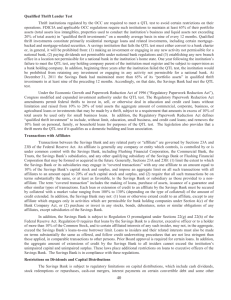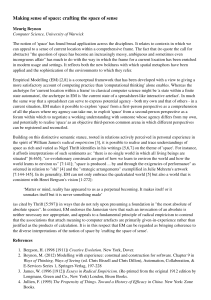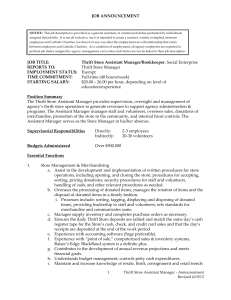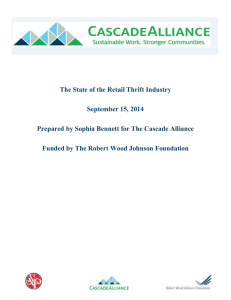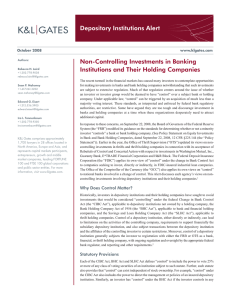in “qualified thrift investments”
advertisement
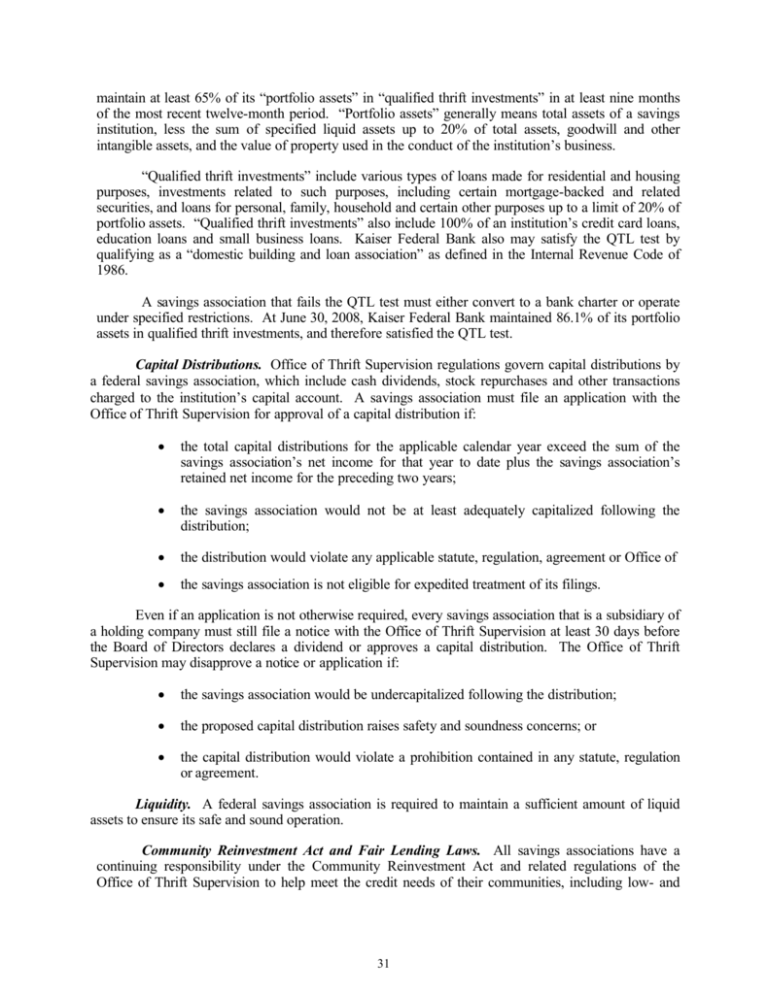
maintain at least 65% of its “portfolio assets” in “qualified thrift investments” in at least nine months of the most recent twelve-month period. “Portfolio assets” generally means total assets of a savings institution, less the sum of specified liquid assets up to 20% of total assets, goodwill and other intangible assets, and the value of property used in the conduct of the institution’s business. “Qualified thrift investments” include various types of loans made for residential and housing purposes, investments related to such purposes, including certain mortgage-backed and related securities, and loans for personal, family, household and certain other purposes up to a limit of 20% of portfolio assets. “Qualified thrift investments” also include 100% of an institution’s credit card loans, education loans and small business loans. Kaiser Federal Bank also may satisfy the QTL test by qualifying as a “domestic building and loan association” as defined in the Internal Revenue Code of 1986. A savings association that fails the QTL test must either convert to a bank charter or operate under specified restrictions. At June 30, 2008, Kaiser Federal Bank maintained 86.1% of its portfolio assets in qualified thrift investments, and therefore satisfied the QTL test. Capital Distributions. Office of Thrift Supervision regulations govern capital distributions by a federal savings association, which include cash dividends, stock repurchases and other transactions charged to the institution’s capital account. A savings association must file an application with the Office of Thrift Supervision for approval of a capital distribution if: the total capital distributions for the applicable calendar year exceed the sum of the savings association’s net income for that year to date plus the savings association’s retained net income for the preceding two years; the savings association would not be at least adequately capitalized following the distribution; the distribution would violate any applicable statute, regulation, agreement or Office of the savings association is not eligible for expedited treatment of its filings. Even if an application is not otherwise required, every savings association that is a subsidiary of a holding company must still file a notice with the Office of Thrift Supervision at least 30 days before the Board of Directors declares a dividend or approves a capital distribution. The Office of Thrift Supervision may disapprove a notice or application if: the savings association would be undercapitalized following the distribution; the proposed capital distribution raises safety and soundness concerns; or the capital distribution would violate a prohibition contained in any statute, regulation or agreement. Liquidity. A federal savings association is required to maintain a sufficient amount of liquid assets to ensure its safe and sound operation. Community Reinvestment Act and Fair Lending Laws. All savings associations have a continuing responsibility under the Community Reinvestment Act and related regulations of the Office of Thrift Supervision to help meet the credit needs of their communities, including low- and 31

